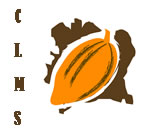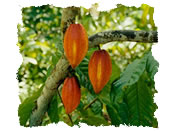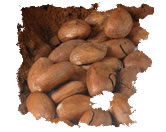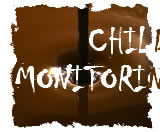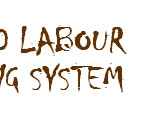|
|
|
Management of cocoa sector
|
The boom of the cocoa sector in comparison with other sectors has resulted on an appropriate capacity building and investment policy, and the availability of forest resources, and an incentive immigration policy developed since 1960.
|
| |
From 1963 to 1998, the CAISTAB was carrying out the organization of the internal marketing and the export activities of cocoa. At the beginning of each cocoa campaign, the organization determined a guaranteed price to the producer applicable throughout the country as well as other yielding prices at the different steps of the supply chain: primary collection, evacuation (reimbursed on the basis of a rate at the kilometric ton), preliminary operations for export, maritime shipping, agency fees (covering the operating expenses of the CAISTAB and the reserves of stabilization) and uniform export taxes. Exporters must receive the authorization of the CAISTAB to conclude their contracts for sales. Exporters turned over or got back the difference between the contracted price and the export guaranteed price, fixed by the table. This stabilization system favored an exceptional development of the cocoa and coffee supply chain by securing all transactions from the cocoa producer to the exporter, favoring investments in the cocoa supply chain.
|
| |
But since the ‘80's, the difficult economic environment experienced in the world derived from the oil crisis of 1974 and 1979, has resulted in a reduction of the world demand of agricultural commodities. The price of agricultural commodities has decreased, along with many financial difficulties in managing the main key stakeholders' structures operating in the agricultural sector.
|
| |
Given the economic situation of the country, the agricultural sector did not perform well between 1987 and 1993 (BNETD, 1999). Several reforms have been initiated in order to reshuffle the sector for a more transparency and an increase in the efficiency of the key actors. These reforms have been subdivided into two main projects: the Agricultural Structural Adjustment Program (PASA, 1990-1995) and the Agricultural Structural Adjustment Credit (CASA, 1995-1997).
|
| |
In fact, the objectives of the different programs were:
|
| |
 |
Look for a more transparency in the market operations through a progressive liberalization of the marking system of key products |
| |
 |
Move to a strengthening of structures of production |
| |
 |
Increase the role of agricultural professional organizations, improving the revenues of cocoa producers |
|
| |
The reforms were going on through the strengthened structural adjustment facility (FASR) which resulted into the complete liberalization process of the cocoa supply chain (complete liberalization process of coffee on October 19, 1998 and liberalization of cocoa, august 12, 1999)
|
| |
Following these reforms, the economic environment of the sector experienced a profound mutation. As for mutations, we notice the replacement of CAISTAB by three management organizations in charge of functions carried out by the previous structure. The Stock Exchange of Coffee and Cocoa (Bourse of Café du Cacao (BCC), the Regulatory Authority of Coffee and Cocoa (Autorité de Régulation du Café et du Cacao (ARCC), and the Regulation and Control Fund (Fonds de Régulation et de Contrôle (FRC).
Besides ARCC, these structures are managed by the actors of the supply chain. Also, with the assistance of the administration, another organization called “the Fund for development and promotion of activities of cocoa producers (le Fonds de Développement et de Promotion des activités des Producteurs de Café et de Cacao, FDPCC)”, a tool for collecting savings from the cocoa producers, has been put in place.
|
|
|


